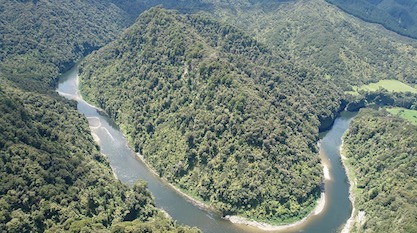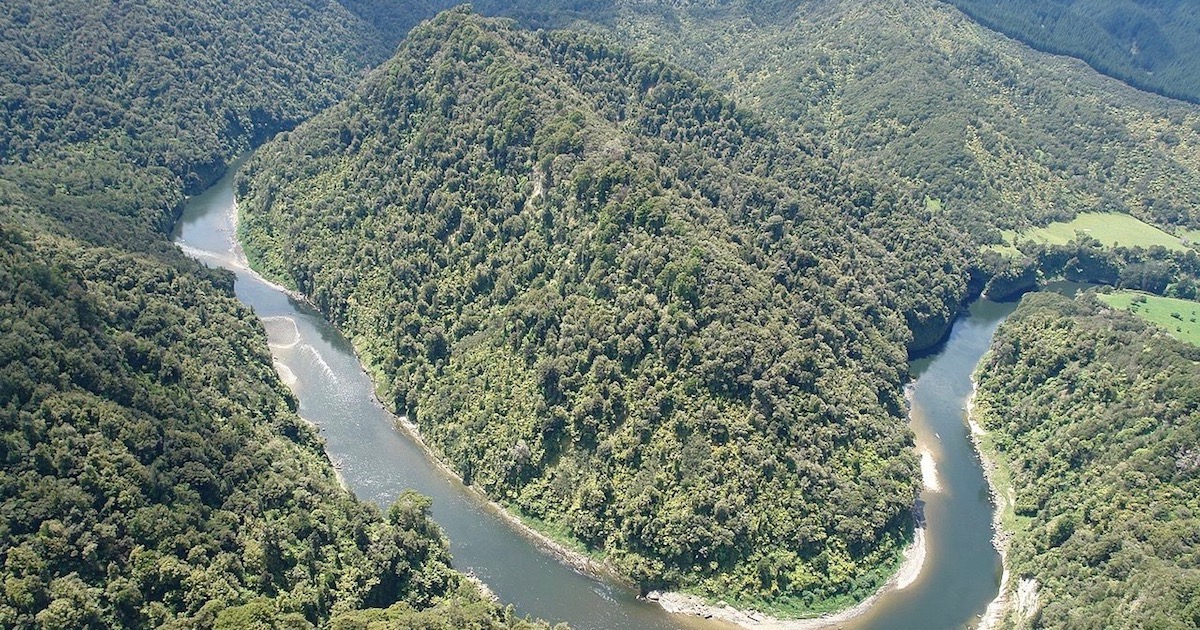 Culture & Ethics
Culture & Ethics
Teen Vogue, National Geographic Push Nature Rights Further into Mainstream


The nature-rights movement is creeping steadily into the mainstream. Recently, the world’s second-most-prestigious science journal, Science, came on board. Now from the other end of the intellectual spectrum, Teen Vogue has published a one-sided story that would persuade impressionable young readers to join the cause. Added bonus: It promotes neo-mystical earth religion and indigenous peoples’ rights!
While the rights-of-nature movement is a relatively new concept for Western communities, its use by Indigenous peoples can be traced to traditional worldviews and laws that view nature as a living being. Humanity is integrated into this being, not separate from it. For example, the Whanganui community in New Zealand, which advocated for the rights of nature for the Whanganui River, otherwise known as Te Awa Tupua, has a saying to demonstrate its connectedness to the river — Ko au te awa, ko te awa ko au: I am the river, the river is me.
Undermining Western Civilization
The story gushes that nature rights will restore ancient indigenous wisdom, meaning it will undermine Western civilization.
The movement for rights of nature is more than just a level of enhanced environmental protection or even the development of a new way of thinking about nature in the modern world. It is all of that, but it is also the act of asserting traditional Indigenous law and philosophy into modern society.
Here’s what they don’t tell impressionable readers.
- Nature rights isn’t about preventing pollution — we have laws for that. It is about impeding human enterprise and reducing prosperity, since anyone can sue to prevent any human activity that the person suing believes violates the “rights” of nature.
- The very indigenous people who are supposed to benefit from nature rights are also, often, the most destitute — even though they possess lands rich in natural resources. Talk about a plan to keep the poorest people mired in misery!
- Nature rights is not compatible with the modern world that has to support seven billion people, meaning the need to use industrial farming methods, the intense extraction of natural resources, and large-scale development of the land.
- Nature rights seeks to knock human beings off the pedestal of unique value. That would lead to a more brutal world, not a more gentle one.
- Nature rights substantially undermines the crucial concept of rights, which is indispensable to protecting human liberty. If everything has rights — fungus, pond scum, mosquitoes, viruses, geological features, and minerals, for example — in essence, nothing does.
- Nature rights cleaves the important nexus between rights and responsibilities.
- Nature rights activists’ primary purpose is to destroy capitalism. Yet, societies founded on free enterprise are the cleanest because they are, not coincidentally, the most prosperous.
Indigenous Religious Beliefs
National Geographic has also noticed the cause — and approvingly reports that New Zealand is leading the charge. Again, we see the celebration of incorporating indigenous religious beliefs into Western law. From the story:
The legal framework flows naturally from the recognition of the river as a person and an ancestor. In families, we tend not to focus on rights but on mutual obligations. That nature is family is central to Maori cosmology. They see the living world as an extended relationship network, in which humans are neither superior nor inferior to any other life form. All are linked by shared descent from Earth and sky.
New Zealand is expanding the scope of these laws to other geological features:
New Zealand recognized in law what Maori had been insisting all along: The river is a living being. Parliament passed legislation declaring that Te Awa Tupua — the river and all its physical and metaphysical elements — is an indivisible, living whole, and henceforth possesses “all the rights, powers, duties, and liabilities” of a legal person.
This is not the only such statute. Based on the Whanganui precedent, 820 square miles of forests, lakes, and rivers — a former national park known as Te Urewera—also gained legal personhood. Soon a mountain, Taranaki, will become the third person.
Let’s Sue the River
Rivers, mountains, and forests can’t have duties! If the river floods, for example, can it be sued? Ridiculous.
And yes, of course, nary was heard a discouraging word in the entire story. Good grief, National Geographic is as mainstream as it gets.
People keep telling me to chill, that nature-rights advocacy is just so much radical bloviating that will never happen. But it is happening, as I have repeatedly demonstrated.
The encroachment of “nature rights” onto responsible environmentalism is accelerating. It’s still not too late to stifle it. But that will require taking the threat seriously. We’d better hurry because I sense that time is growing short.
Photo: Whanganui River, aka Te Awa Tupua, New Zealand, by Duane Wilkins [CC BY 3.0], via Wikimedia Commons.
Cross-posted at The Corner.
